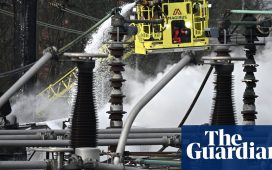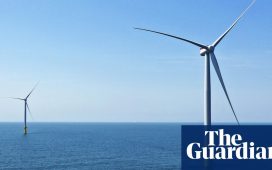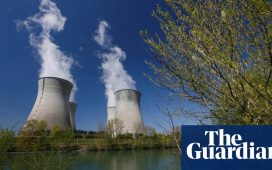Unlock the Editor’s Digest for free
Roula Khalaf, Editor of the FT, selects her favourite stories in this weekly newsletter.
“Superhighway” has an impressive ring to it. It sounds like a definitive solution that will put bottlenecks firmly in the rear-view mirror. Yet the UK’s new electricity superhighway, approved by the energy regulator this week, is a more contained undertaking.
The £3.4bn Eastern Green Link 2 does mean a significant step-up in electricity transport capacity. When operational in 2029, it will provide 2 gigawatt of capacity over 436km, from Scotland to Yorkshire, a near-30 per cent increase compared with peak availability across the border today. It is also the first project to receive final funding sign-off from Ofgem under new rules to accelerate the delivery of infrastructure.
The fly in the ointment, however, is that upgrading the UK’s electricity grid for the energy transition is such a vast undertaking that this venture barely makes a dent in it. The challenge is a global one. National Grid has nearly doubled its investment plan to £60bn, of which almost 80 per cent will be on electricity networks. Goldman Sachs estimates that Europe alone will need almost €800bn on transmission and distribution in the coming decade.

There are two reasons. First, electricity demand will rise sharply as EVs and heat pumps take off. And secondly, renewables generate electricity in different places from the old fossil power stations.
Wind power is increasingly being generated in Scotland, and — even with this piece of kit — there is not enough transport capacity to deliver it to areas of demand in the south of the UK. Already, peak electricity production in Scotland is perhaps 10-14GW, thinks Tom Edwards from Cornwall Insight, compared with local peak consumption of 3GW. Scotland may add as much as 10GW of production capacity by 2030.
Worse, transport bottlenecks are only a part of the problem. Renewables are struggling to connect to the grid, with more than 700GW of potential capacity stuck in a queue, according to a June report by Octopus Energy. Efforts to address this have not delivered a meaningful acceleration.
Ofgem’s fast-track process for transport infrastructure does offer a spark of hope. National Grid’s electricity system operator has five projects in the new lane, for a combined 10GW of transport capacity. And greater certainty of funding allows the operator to lock in scarce supplies of cables and cable-laying ships.
Yet despite these efforts, it is hard to shake the feeling that delivering the giant investment plans announced by utilities remains staggeringly ambitious — as does the hope of decarbonising electricity grids any time soon.











